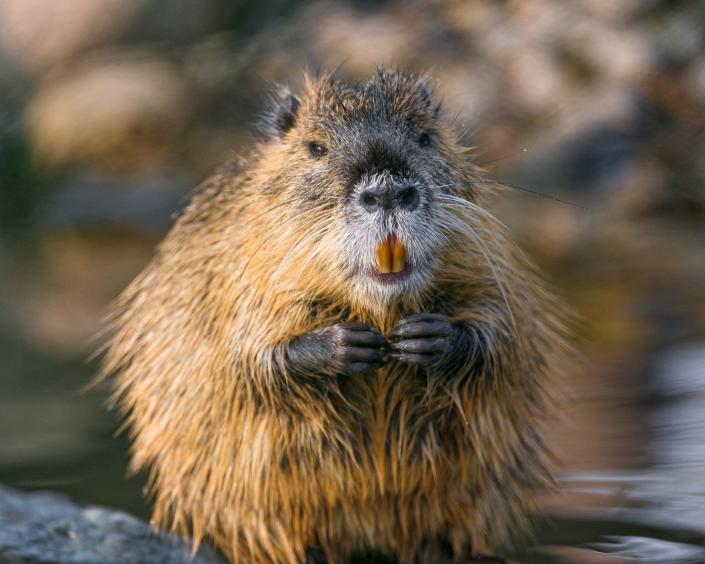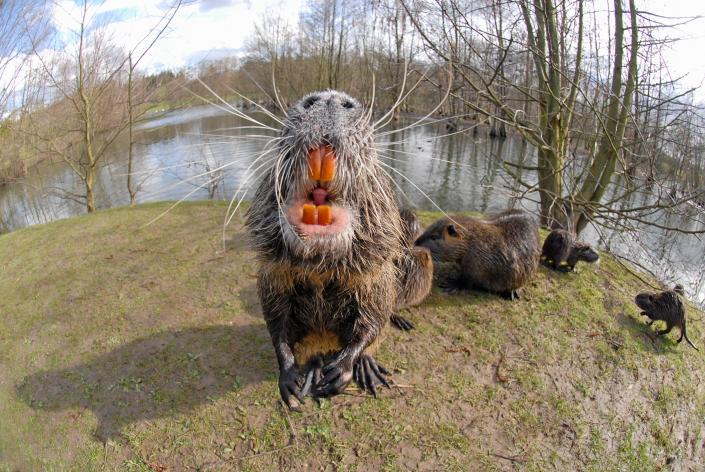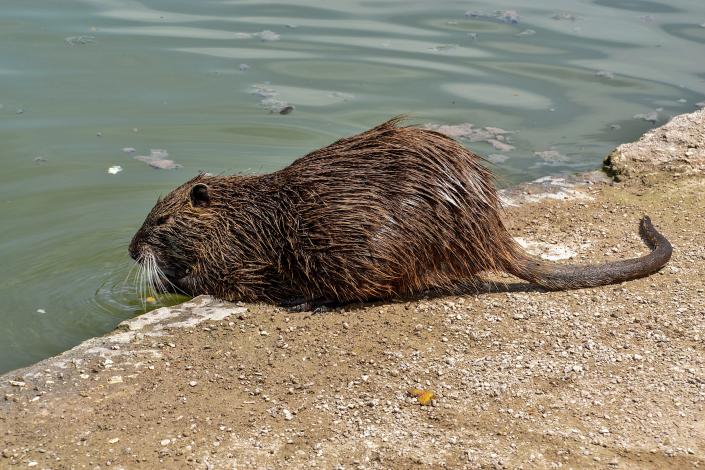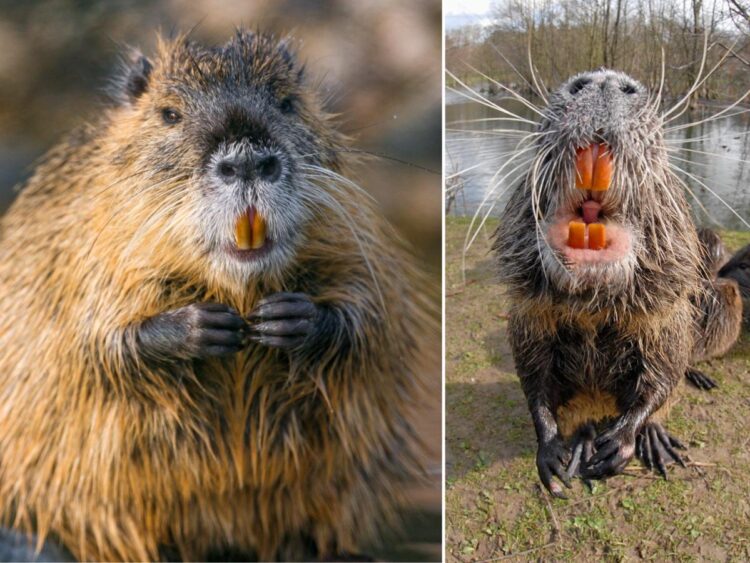
-
A large invasive species that resembles a beaver is damaging ecosystems in over a dozen US states.
-
Nutria, native to South America, were introduced to the US in the late 1800s for their fur.
-
The aquatic rodents has since spread, destroying wetlands and threatening flood infrastructure.
A large aquatic rodent with bright orange teeth is causing environmental destruction in the US as wildlife officials struggle to keep the species from proliferating further.
Nutria — which resemble a cross between a beaver and an over-sized rat — can grow to be two feet long, with an additional 1 ½-feet of tail, and weigh up to 20 pounds. They have brown fur, a distinguishing white muzzle, and white whiskers.
The orange color of their teeth, a trait they share with beavers, comes from having a special, strong enamel that includes iron. Unlike beavers, North America’s largest rodent, nutria have a long, round, and mostly hairless tail, reminiscent of a rat’s — but much bigger.
Native to South America, nutria were first introduced to the US around 1890 as part of the fur trade, according to the US Department of Agriculture. When the market for nutria fur collapsed in the 1940s, thousands of them escaped or were let loose by farmers who could no longer afford to care for them.

The invasive species has since spread to at least 20 states, primarily in those along the Gulf Coast, such Louisiana and Florida. In Texas, they’ve made the Parks and Wildlife Department’s “most unwanted” list, which includes invasive plant and animal species that are causing the most destruction. Environmental damage caused by nutria has also been documented in the Pacific Northwest and on the Atlantic coast.
Several features of nutria contribute to their status as destructive pests. The rodents eat up to 25% of their body weight in plants every day. Because their feeding strategy involves burrowing, as much as 10 times the amount of plant material that they actually eat is wasted in the process.
When they burrow, nutria can create complex dens that go almost 20 feet deep and span 164 feet into a bank. In addition to destroying the soil, native plant communities, and agricultural crops, the burrowing can trigger erosion, cause levees to break, and damage infrastructure that helps prevent floods.
Since nutria tend to live near water, including rivers and lakes, they pose an especially significant threat to endangered native species which rely on wetland habitat. The rodents often carry pathogens and parasites that can contaminate water supplies and potentially spread to humans.
Photos taken of the Blackwater National Wildlife Refuge in Chesapeake Bay in 1939, before nutria were introduced, and again in 1989, revealed the stark impact of the nutria. In those 50 years, more than 50% of the refuge’s marshes had converted to open water, according to US Fish and Wildlife. The rodents were finally declared eradicated in Maryland last year.

In 2017, an established, reproducing group of nutria was discovered in California, prompting efforts to eradicate the fledgling population before it could get out of hand. As of November 2022, 3,330 nutria have been removed from California, according to state wildlife officials.
Efforts to remove nutria from the environment include hunting, trapping, and even fitting them with collars and letting them loose again in hopes they will lead officials to more nutria. However, the nutria’s rotund frame poses a problem for collaring.
“Nutria don’t have necks, so it’s an extreme challenge to try and collar them,” Valerie Cook, who manages effort to eradicate nutria in California, told The Wall Street Journal.
But officials in the state say “there is a small window of opportunity to successfully eradicate the population of nutria from California,” adding that “as time progresses, the population size and geographic area of infestation are increasing, along with the effort, resources, and funds required for successful eradication.”
Wildlife officials across the country encourage the public to report nutria sightings to their local agencies to aid in management and eradication efforts.
Have a news tip? Contact this reporter at kvlamis@insider.com.
Read the original article on Business Insider
[ad_2]
Source link







